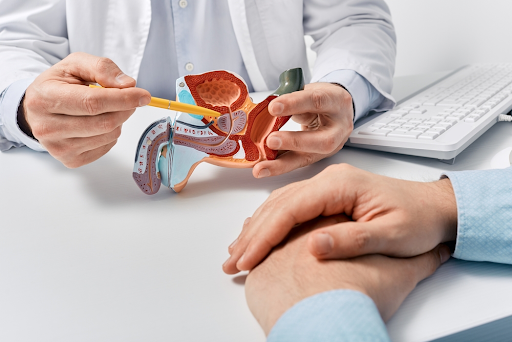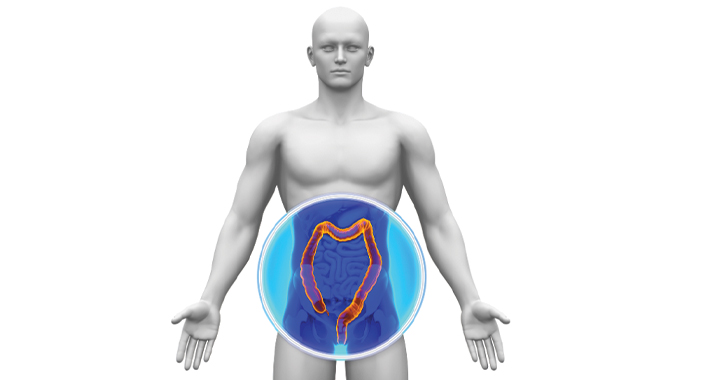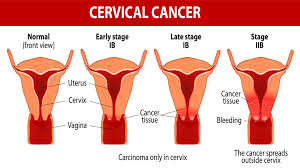An Overview: Prostate Cancer
Only men carry the prostate gland. According to the reports, 1 in 10 men suffer from the prostate gland and the fortunate thing is, maximum times it gets cleared in the early stage. The chief function of the prostate gland is to form the prostate-based antigen or semen ( semen is a viscous white fluid and it activates during ejaculation, usually called sperm). When the level of prostate based antigen multiplies chances of prostate cancer increases. In severe conditions, cancerous cells may burst from the prostate gland to other areas, specifically in bones and seminal vesicle, this happens mostly when the size of cells uncontrollably increases. Remarkably, men at the age of 55 or above are more prone to prostate cancer.
CAUSES OF PROSTATE CANCER
- Genes play its part, as in 8-10% of men’s cause of this cancer is family history. If a man’s father, brother, grandfather, or uncle with blood relations have/had cancer in their life then most probably that person’s at high risk of prostate cancer. Typically, HOXB13, BRCA1, and BRCA2 are genes responsible for this.
- Ethnicity can also cause prostate cancer.
- Black men – Approximately 30% or higher at the risk. Origin from Africa or West Indies.
- White Men – They have 10-12% chances
- Asian Men – 7-8% chances
- Obesity and a sedentary lifestyle have given many examples of prostate cancer.10-20% possibility increases than normal-weight carrying man.
- Old age
- Repetitive masturbation in young and old men can also cause prostate cancer
SYMPTOMS OF PROSTATE CANCER
- Trouble in passing out the urine
- Repetitive urination ( even in non-diabetic men)
- Hematuria ( more or less bleeding)
- Impotence or erectile dysfunction – loss of penile erection
- Sudden pain and swelling in the pelvic region, thigh, and chest
- Lower limbs bulge out
- Difficulty in passing out stools and other bowel issues
Prostate cancer shares similar symptoms with other similar conditions that aren’t forming cancers such as Benign Prostatic Hyperplasia which is also known as enlargement of the prostate. Second is Prostatitis occurs due to bacterial infection but symptoms match with the above-mentioned ones.
TYPES OF PROSTATE CANCER
There are many major and minor types of prostate cancer that exist, among them, highly detected (above 95%) one is adenocarcinoma. The 6 different types of prostate cancer which can enter your body. Let’s check’em out!
- Adenocarcinoma
The acinar (bunch of cells) gets attached to fluid producing cells and it is responsible for multiplying the levels of PSA ( Prostate-specific antigen). Another category of adenocarcinoma is ductal connected and it is very rare, in this it attacks the ducts of the prostate gland.
- Squamous cells carcinoma
Cancer starts in thin, flat cells of the epidermis of the prostate gland. Fortunately, this is found in less than 1% of men because it spreads very rapidly.
- Sarcomas
Sarcoma has the capability to spread in connective tissues such as fat and hematopoietic tissues. Mainly there are two sarcomas categories leiomyosarcomas and rhabdomyosarcomas. Only 0.1-0.5 cases get reported of this prostate cancer every year.
- Urothelial Cancer
This cancer begins from the urethra, tumor formation around the bladder, and urethra. The most common symptoms are bleeding while passing out urine and frequent urination during the night/.
TREATMENTS OF PROSTATE CANCER
The treatment depends on the stage of cancer, age, health conditions, patient’s preference relatively, risk factors, and complications.
When no symptoms are experienced and if you don’t feel any pain then also go for a test, if the doctor says to wait then wait for some days. In this period you have to go for consultation until you aren’t occupied with symptoms/signs but no tests will be performed till then. In the meantime, you may need to do some essential tests for active surveillance such as:
- Rectal Test
- Ultrasound test
- Methodical PSA level examination
- Regular blood test
Early-stage or 2nd stage requires:
- Immunotherapy
This is the convincing treatment for prostate cancer. The goal is to make the patient’s immune system tough enough to protect against cancerous cells. The team of doctors and lab assistants will try every possible method to kill or inactivate these cells. Provenge vaccine stimulates the immune system and manages to destroy cells. Provenge vaccine helps to reduce or stop the cancerous cell from spreading in different parts but the PSA level remains the same so that’s why this treatment works best when combined with radiation therapy.
- Cryotherapy
This treatment is time-consuming but doesn’t compromise in giving effective results though so it is good to stay in the hospital for 24 hours or more to take numerous benefits. This treatment is mainly invented for people who aren’t satisfied with the past treatments so to go for this treatment initially isn’t recommended. A doctor typically place nitrogen on the skin through the intravenous method, this procedure requires anesthesia either general/local or regional, in this cells freeze and becomes numb permanently or die on spot.
- Radiation therapy
When you are suffering from serious life-long conditions like diabetes, BP, or cholesterol then this therapy is very promising. Dense radiation beams used to get rid of cancer filled cells. The doctor may divide this into different sessions (4-5).
Radiation therapy is parted into two categories:
- External Beam – In this machine is used externally to detect and kill the cells. This treatment is almost like getting an x-ray. In this, each session takes around 20-30 mins.
It is done in different ways like some doctors prefer stereotactic body, 3D conformal, and some use intensity-modulated.
- Internal beams or Brachytherapy – In this, small tiny grain-like shaped radiations are injected inside the body. This is combined with an external one when the patient is in the final stage of prostate cancer.
- Chemotherapy
In the last stage, this works when linked with hormone therapy. Its start-stop-start therapy in which after completing one phase of chemo dose through IV, rest period will start and after that again next phase starts and so on until cancer cells aren’t killed. Medicines like Mitoxantrone and docetaxel are given. The device will be connected to the chest via IV. This gives side effects like hair loss, diarrhea, bleeding, vomiting, etc.
- Hormone therapy
Hormone therapy’s alternate name is androgen deprivation therapy. In this Lupron, the hormone is kept in front to fight against the harmful cells. Extreme level cancers can be treated with this also for the intermediate stage it works well. The injection is used to connect the lupron with the body. 5-6 shots are given in 6 months, probably 1 in 1 month. Side effects like an ache in bone, spinal cord’s narrowing may occur.
SURGERIES FOR PROSTATE CANCER
- Radical Prostatectomy
People rely on this almost every time as doctors suggest this to them first. In this surgery either the prostate gland is taken out partially or completely and eventually removes cancerous cells if any major complications and symptoms aren’t there then one should select this. If the need arises, the seminal vesicle will be pulled out too.
Radical is categorised in 4 parts:
- Laparoscopic – Surgeons makes tiny cuts around the abdomen or belly. Voice-controlled cameras and lights are used. Also known as keyhole prostatectomy.
- Retropubic – A big incision is made in the lower part of the abdomen and the prostate gland is removed gently. This procedure gives recovery in a few days and doesn’t have major complications and side effects.
- Robotic – Surgeon uses robotic devices to remove malignant tumors, one should not choose this if they are morbidly obese and have oversized prostate. This surgery isn’t hospital stay demanding and gives very little bleeding.
- Perineal – This is very similar to retropubic, the only new thing is incision is made around the perineum ( nestled between the things).
DIAGNOSIS FOR PROSTATE CANCER
- Digital Rectal Exams – This is the base of all the tests and screening for prostate cancer just like physical and blood tests. A finger of the doctor will be positioned inside the rectum to know the actual severity and to determine solid mass or tumor.
- Bone Scan – Prostate cancer can extend to the bones so this is mandatory and if the pain in the bone is increasing then also this done to measure the calcium level in the bone.
- PSA Test – This test calculates the total level of PSA in the patient’s blood. The laboratory will examine your blood sample. Specially used to detect early-stage prostate cancer and for the men above 50 this is a boon, still, the benefits of these tests aren’t even some people get full benefit after this and in some doesn’t. If the PSA level is more than 10 then the person is 50% or more prone to prostate cancer. If it is between 4-10 then chances are 15-25%
- CT and MRI scan
- PET Scan
- Biopsy – When gets confused he/she take the sample of cancer cells and keep it under a microscope then a biopsy is done, this test is very important to check cancer.
COST OF PROSTATE CANCER
For surgeries, the cost is somewhere between $6000-$40000. For test or diagnosis, the cost is between $200- $15,000.
Everything depends on the location, doctor, type of the test, type of the surgery, surgeon, sessions, etc.
FAQs:
- What’s the survival rate of prostate cancer?
If it does not spread and early or intermediate stage survival rates are 70-90%.If it spreads and at the final or advanced stage survival rates are 30-50%.
- How to prevent prostate cancer?
By adding, an exercise to your daily routine. Eating healthy foods like green leafy veggies, seasonal fruits, omega 3 fatty acids like flaxseeds and fish oil, taking enough calcium.
Avoiding cigarettes/cigars.
- What is the Gleason grade?
It calculates the aggressiveness of prostate cancer and gives the approximate score. Primary and secondary numbers of grades are linked and the average is made from both. If the Gleason score is 6 or less then you are far from prostate cancer. During this stage tests like PSA, CT, MRI, and biopsy are included in the diagnosis.If the score is between 6-8 then you are on the center point of prostate cancer not too near and not too far. This surgery is an add on along with tests.If the score exceeds 8 then it’s very risky and only surgery and medicines are real rescuers.
The information provided in this blog is for educational purposes only and should not be considered as medical advice. It is not intended to replace professional medical consultation, diagnosis, or treatment. Always consult with a qualified healthcare provider before making any decisions regarding your health. Read more







